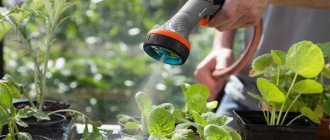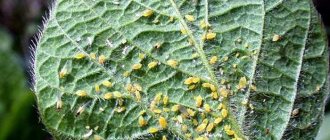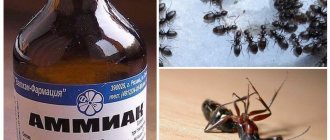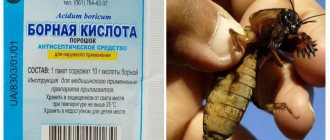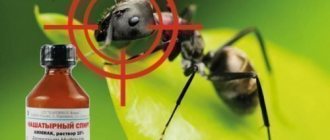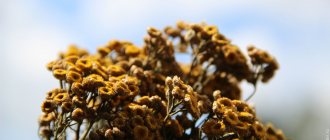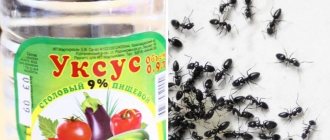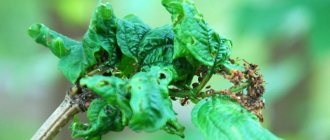Aphids are small insects that cause great harm to various ornamental crops, which include roses. Pests use plant sap to feed. In addition, aphids can cause the development of a viral disease, as a result of which rose leaves turn yellow and curl.
The pest is also capable of secreting a sticky substance, which produces an unsightly black sooty fungus. Not every gardener fights aphids, considering this parasite not so dangerous.
How does ammonia work on aphids?
Strong-smelling (10%) ammonium hydroxide contains active volatile substances. They cause paralysis and depress the respiratory system of aphids. The active ingredients penetrate the pest's body, causing burns of the mucous membrane, swelling, and convulsions. This mechanism of action explains why gardeners actively use ammonia against aphids on roses and other flowering crops.
The pungent odor repels insects. Treatment allows you to get rid of not only aphids, but also caterpillars, spider mites and other parasitic pests. Ammonia does not cause any harm to the flower itself, but only if certain rules are followed. Otherwise, you can damage the delicate flower.
Neighboring plants
In our garden and vegetable garden you can plant plants that create a strong and pungent odor. Aphids cannot tolerate such aromas, so such plants should be placed closer to rose bushes. Such allies in the fight against aphids will help ensure the health of our roses and their beautiful appearance.
Plants that aphids are afraid of
Will help repel pests:
- marigold;
- mint;
- dill;
- sage;
- parsley;
- daisies;
- lavender.
It is very easy to plant the listed crops in your garden, as they are easy to care for and have a wide distribution.
Attracting aphids
In contrast to those discussed earlier, there are flowers and plants that attract aphids. Such crops must be planted away from roses, in the far corners of your garden.
Crops that attract aphids:
- petunia;
- nasturtium;
- begonia;
- decorative poppy;
- cosmos;
- mallow.
Plants attractive to aphids
From shrubs and trees:
- mulberry;
- Linden;
- viburnum;
- bird cherry.
General rules of application
It is strictly prohibited to use ammonia in its pure form. The concentrate causes burns on roses. It is dangerous even for humans. The skin and mucous membranes can also be seriously damaged. You cannot prepare the solution in reserve. It must be fresh. The active component quickly evaporates and the composition becomes unsuitable for use.
To carry out the treatment, you will need a garden watering can equipped with a wide nozzle. This allows the droplets to completely cover the entire bush and even the lower shoots, where most aphids usually live. If the treatment is carried out not in the garden, but at home, the watering can can be replaced with a spray bottle.
Summarize
In order for roses to develop well and bloom luxuriantly throughout the season, of course, they need to be fertilized. We talked about how to feed roses in the spring for growth and lush flowering in the garden in this article.
It is better to alternately use organic and mineral fertilizers. And in no case should you try to overfeed the plants by applying an excessive amount of fertilizer according to the principle “you can’t spoil the porridge with oil.”
For example, too much nitrogen fertilizer will lead to active growth of green mass, but will delay the formation of buds.
Everything needs to be done in moderation and in a timely manner. Then the roses will definitely respond to your care and delight you with their magnificent blooms.
Best regards, Alexander Tkachenko.
Recipes and recommendations for preparing the solution
There are several recipes for preparing ammonia for roses to control pests.
Recipe 1
The folk remedy is prepared from:
- 10 liters of water;
- 60 ml of ammonia;
- ¼ bar of laundry soap.
Soap is grated on a fine grater. This allows it to dissolve much faster. All components are mixed until dissolved. Pour the solution into a watering can or spray bottle. Cracking is performed.
Recipe 2
Completely repeats the first one, but they use liquid rather than bar soap.
Recipe 3
For preparation take:
- 25 ml salicylic acid (2%);
- 0.5 l of settled warm water;
- 1 tbsp. l. ammonia.
The prepared components are combined and mixed until smooth. Carry out sanitization, making sure that the entire plant is moistened.
Recipe 4
Prepared from:
- 40 ml of ammonia;
- 20 g washing powder;
- 1 bucket of settled water at room temperature.
The components are thoroughly mixed. The composition is used twice with a break of two weeks.
Recipe 5
For preparation take:
- 50 ml of ammonia;
- 2 handfuls of wood ash.
Pour ash into a bucket of settled water and pour in ammonia. Everything is mixed and used for its intended purpose.
"Greenfinch"
This remedy is prepared as follows:
- the greens of any herb are chopped, the barrel is filled about 2/3 with grass;
- fill the barrel to the top with water;
- soda ash (30-35 g) is added;
- cover the top with a lid in which holes are made for the release of gaseous substances;
- leave to ferment for 1.5-2 weeks.
After fermentation is complete, the “green stuff” is diluted with water in a ratio of 1:10 and added to the tree trunk circles.
How to spray with ammonia correctly?
The rose must be prepared before spraying. First, the bush is inspected, parts of the plant damaged by aphids are removed, and then they are burned. This helps prevent re-infestation by the pest. Only after this event they begin to treat with ammonia.
Spraying is done on each side of the leaf. It is recommended to distribute the solution using a brush. Pests most often hide on the inside of the leaves. To achieve a greater effect, the bush is covered with film for a while.
It is recommended to carry out treatment every 10-15 days. For preventive purposes, ammonia is used for roses once every 30 days. The composition is made weak. Add 1 ml of ammonia per liter of settled water.
Is it possible to spray tomatoes with hydrogen peroxide?
For watering and spraying
For seedlings, a composition is used that includes 2 tablespoons of peroxide (3% concentration) and 1 liter of water.
Important! After treatment with peroxide,
the root system of tomatoes and resistance to diseases are strengthened.
You can
water the seedlings with peroxide on an ongoing basis, but not more than once a week.
Interesting materials:
How much do wired headphones cost? How much did a TV cost in the USSR? How much did an apartment cost in 1970? How much does 1 kg of aluminum cost? How much does 1 kg of cast iron cost? How much does 1 kg of beef cost? How much does 1 kg of rabbit cost? How much does 1 kg of wheat cost in Ukraine? How much does 1 kg of saffron cost? How much does 1 cube of beech cost?
Common Mistakes
Improper use of ammonia leads to a decrease in the effectiveness of the folk remedy:
- Incorrect dosage. In order for ammonia to have the desired effect, you must strictly adhere to the recipe.
- Preparing the composition in reserve. It is recommended to prepare the solution before each treatment. If it sits for a while, the active substances will stop working.
- Lack of prevention. There is no need to refuse spraying after getting rid of aphids and other pests. Preventative treatment is necessary because aphids move from one plant to another.
- Too much "distance". The distance from the spray gun should be small. Otherwise, the ammonia will not get on the shoots and leaves.
Ammonia should be sprayed on neighboring plants, which may also be affected by the pest. If this is not done, the aphids will attack the roses again.
Folk remedies for lush flowering
Many gardeners are against mineral fertilizers. Is it possible to fertilize these delicate flowers with homemade infusions? It is possible and necessary! Roses will respond to them with lush color.
Yeast feeding of roses
Folk remedies can be fed throughout the season. Every home has yeast: dry or wet. In July, yeast watering will be an excellent solution. Fertilizing can be done with any yeast.
What are the benefits of yeast for roses? Microorganisms release carbon dioxide so abundantly that plant debris begins to quickly decompose. Due to this, the soil microflora improves, which has a beneficial effect on the roots of seedlings.
In addition, yeast contains many vitamins and microelements that help increase the growth of greenery and accelerate photosynthesis. As a result, roses bloom profusely and, most importantly, for a long time.
How often to baste with yeast mixture? Twice per season:
- In spring after pruning;
- At the beginning of bud formation.
Before use: take dry yeast (10 g) into 3 liters of warm water, add 100 g of sugar, and leave to ferment for a day. Then take a glass of infusion, pour it into a bucket of water, mix and water the bushes.
Efficiency of the method
Ammonia, as evidenced by reviews from flower growers, is destructive to aphids. It is enough to wait a few hours to see the result. Insects will no longer bother roses.
The cooking recipe should not be violated. Ammonia contains a high concentration of nitrogen, so overfeeding with this substance can cause yellowing of the leaf blade.
Transition to summer rose care
In summer, in June-July, roses especially need a lot of nutrition. For better absorption of nutrients, rose bushes need to be fed once every 2 weeks.
Like any other plant, during budding they need feeding in strict proportions, without excess. This procedure should be carried out as follows:
- First, water the rose bushes.
- Then add food.
- Next, water the rose garden again and loosen the soil.
If you decide to spray with a nutrient mixture, be sure to wait for clear weather. Spraying on a rainy day will not bring any benefit. The manipulation will have to be repeated again.
What to apply at the root? It is important to choose those minerals that contain potassium and completely remove nitrogen. A good solution is to fertilize with potassium chloride or potassium sulfate .
It is good to fertilize blooming roses with chicken droppings . Take 0.8 liters of litter, fill it with a bucket of water, and let it sit for several hours. Then pour it under the root. Every other day, sprinkle the soil with ash for better absorption of organic matter.
When the roses are picking up buds, but not all have bloomed yet, focus on phosphorus fertilizing . Prepare the following mixture: 20 g of potassium salt and 40 g of superphosphate per 1 sq.m.
Additional tips and tricks
There are some nuances of processing with ammonia:
- In the garden plot, spraying is carried out with the onset of spring, when the covering material that protects the bush from frost is removed. Indoor roses are treated with ammonia around mid-March.
- After planting flowers in open ground, they are processed on a windless day without precipitation (rain), and then the next. Otherwise, the composition will simply wash off. Flower growers advise spraying bushes in the evening or early in the morning, when aphids are not so active, which allows you to quickly get rid of the pest.
- Processing must be carried out in a respirator and rubber gloves. This is especially important for people prone to allergies. Volatile substances enter the body through the nose and mouth.
There should be no anthill in the garden next to the roses. These insects eat the waste of aphids. They deliberately place this pest nearby. A strong ammonia solution helps fight ants, and then cover with polyethylene. This allows volatile substances to act longer.
What harm does aphids cause and why fight them?
Today it is known that there are about four thousand species of aphids in nature. In particular, approximately 1000 species live on the territory of Russia, each of which selects individual plant species as its habitat.
The danger of aphids, like many other insect pests, lies in their diet. Large colonies of insects settle on plants and suck the juices from young leaves, shoots, and fruits. By parasitizing seedlings, aphids do not allow the fragile plant to develop, reducing the availability of necessary nutrients.
In addition, aphids are carriers of dangerous viral infections. According to statistics, 30% of plants suffering from parasitic aphids soon show signs of viral diseases.
Thus, the appearance of aphids on the site threatens the following consequences:
- Young shoots of affected plants gradually become deformed, stop growing and die;
- Some plants become infected with a viral infection from aphids, which also leads to their death;
- The fruits are eaten by ants that have joined the aphids, which significantly reduces the yield;
- After completely suppressing one plant, the aphid moves on to a new one, thereby increasing the scale of the damage.
Ammonia as a fertilizer
Ammonia is used not only for pest control. The high nitrogen content allows the use of ammonia as a fertilizer for roses. It stimulates growth and has a positive effect on inflorescences and leaves. It is used for root and foliar feeding.
Recommended video:
In the first case, take 25 ml per 10 liters of water, and in the second, add 1 teaspoon of ammonia per 1 liter. Fertilizing is carried out at the beginning of the season, which allows roses to gain better vegetative mass. The rest of the time it will lead to excessive growth of greenery, suppressing flowering.
Security measures
When using ammonia, be sure to follow safety precautions. Inhalation of undiluted vapors leads to burns of the mucous membrane and poisoning.
- Ammonia cannot be combined with other active substances.
- Dilute the solution directly in the fresh air or in a well-ventilated area.
- When working, wear rubber gloves, a respirator, as well as trousers and clothes with sleeves.
- Avoid contact of ammonia with the skin and eyes, but if this happens, rinse the area well with water.
Simple measures can help protect against the negative effects of ammonia.
Signs of defeat
Powdery mildew on roses - how to treat, remedies
The following signs indicate that domestic roses are affected by aphids:
- sickly appearance, wilting of foliage and flowers. If a rose has some kind of parasite, it will definitely begin to fade. This is the first sign you need to pay attention to. When yellow and limp foliage appears, you need to conduct a visual inspection of the rose and, if aphids are found, remove the affected areas;
- bite sites on the surface of green leaves. Outwardly, they resemble small yellowish dots. They can only be seen upon closer inspection of the surface of the sheet plates;
- sticky mucus on leaves. When a pest appears, a sticky liquid remains on the petals and foliage of roses. These are the secretions of aphids that they leave behind while sucking juice from plants;
- white coating. If roses have been infested with aphids for a long time, a white coating appears on their leaves and stems. These are the shells of young larvae, which they shed during molting.
